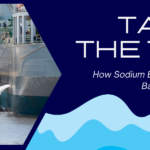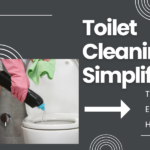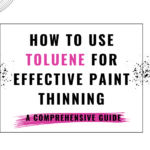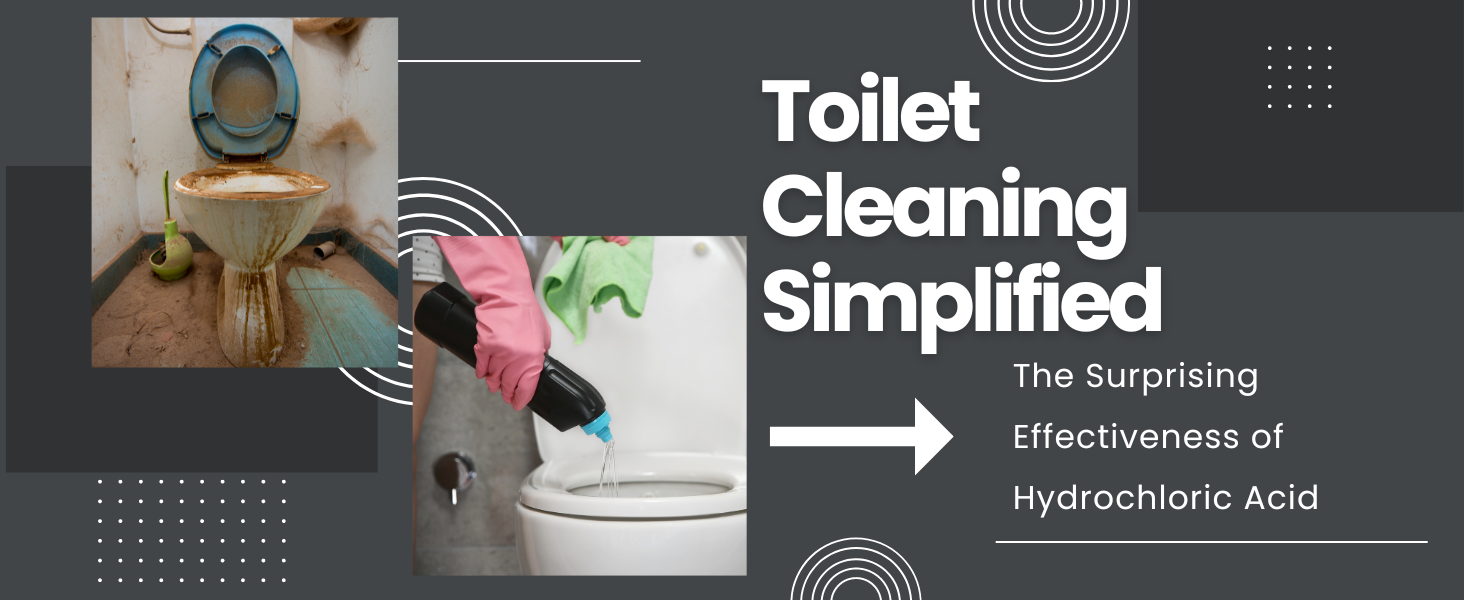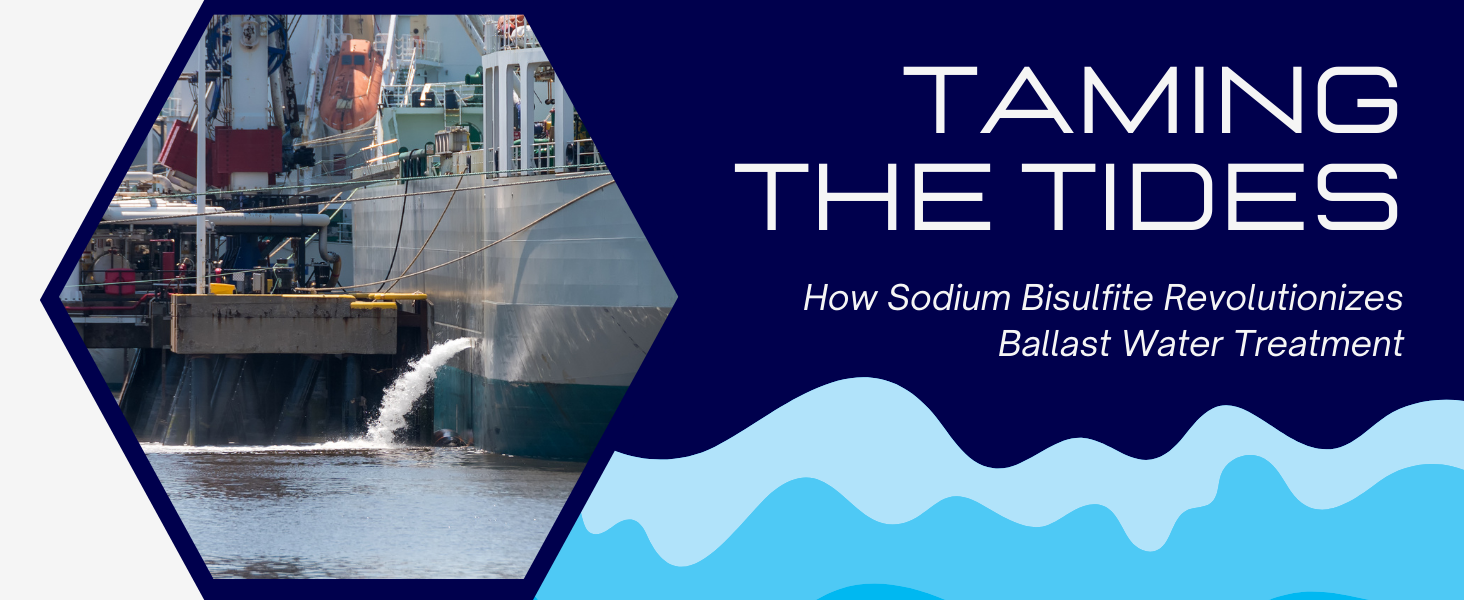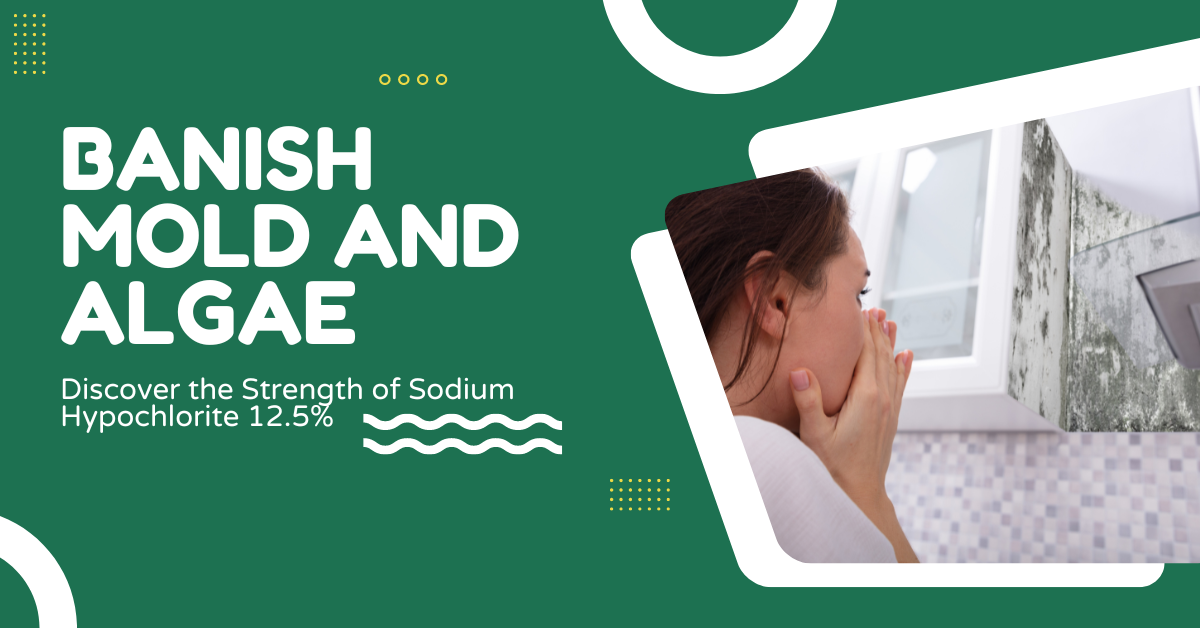
Banish Mold and Algae: Discover the Strength of Sodium Hypochlorite 12.5%
Table of Contents
- Introduction to Sodium Hypochlorite 12.5%
- Understanding the Chemistry
- Safety Guidelines
- Preparation and Mixing Instructions
- Mold Removal Process
- Algae Eradication Techniques
- Application Tips and Tricks
- Suitable Surfaces and Materials
- Precautions and Common Mistakes
- Frequently Asked Questions
- Real-world Case Studies
- Environmental Considerations
- Alternatives and Comparisons
- Buying Guide
- User Reviews and Testimonials
- Conclusion and Final Thoughts
Introduction to Sodium Hypochlorite 12.5%
Welcome to our comprehensive guide on Sodium Hypochlorite 12.5%, a potent and versatile chemical widely recognized for its effectiveness in combating mold and algae. This introduction will delve into the fundamental aspects of Sodium Hypochlorite, outlining its key properties, and why it stands out as a premier choice for household and industrial cleaning applications.
As a reader interested in effective cleaning solutions, you will find valuable insights into how Sodium Hypochlorite works, its diverse applications, and practical tips for safe and efficient usage. Our goal is to equip you with the knowledge to harness the full potential of this chemical, ensuring optimal results in your mold and algae eradication endeavors.
What You Will Learn
- The chemical composition and properties of Sodium Hypochlorite 12.5%
- Its role as a powerful agent against mold and algae
- Safety protocols and best practices for using Sodium Hypochlorite
- Real-world applications and user experiences
Stay tuned as we explore the remarkable capabilities of Sodium Hypochlorite 12.5%, and discover why it is a top choice for professional and home use in tackling mold and algae. Continue reading for an in-depth look at this versatile cleaning agent.
Next: Understanding the ChemistryUnderstanding the Chemistry of Sodium Hypochlorite 12.5%
Sodium Hypochlorite 12.5% is renowned for its powerful disinfecting and cleaning properties. This section explores the chemical attributes that make it such an effective agent against mold and algae.
Key Chemical Properties
Sodium Hypochlorite is a chlorine compound often used as a disinfectant or a bleaching agent. It’s characterized by its high pH level, usually around 11 to 13, which contributes to its ability to break down cell walls in microorganisms. Its reactivity with various organic and inorganic substances also makes it a versatile cleaning agent, capable of tackling a wide range of contaminants.
Molecular Mechanism Against Mold and Algae
At the molecular level, Sodium Hypochlorite is effective because it disrupts the cellular structure of mold and algae. The chlorine in the compound interferes with the proteins and lipids in the cell walls, leading to the death of these organisms. This disruption is what makes it an excellent choice for cleaning areas prone to mold and algae growth.
Comparative Analysis with Other Cleaning Agents
When compared to other cleaning agents like hydrogen peroxide or bleach (sodium hypochlorite is actually the main ingredient in household bleach), Sodium Hypochlorite 12.5% is more potent due to its higher concentration. This makes it ideal for more challenging cleaning tasks, though it also requires careful handling and adherence to safety protocols.
Safety and Handling in Chemical Terms
Handling Sodium Hypochlorite safely is crucial due to its high reactivity and alkaline nature. It should be stored in a cool, dry place, away from acids and organic materials to prevent hazardous reactions. Proper personal protective equipment, such as gloves and goggles, should always be used when handling this chemical.
Next: Safety GuidelinesSafety Guidelines for Using Sodium Hypochlorite 12.5%
Handling Sodium Hypochlorite 12.5% safely is crucial to protect not only those using it but also the environment. This section outlines specific safety measures and best practices.
Personal Protective Equipment (PPE)
When handling Sodium Hypochlorite, always wear protective gear. This includes:
- Gloves: Chemical-resistant gloves (such as nitrile or neoprene) to prevent skin contact.
- Goggles: Safety goggles to protect against splashes in the eyes.
- Clothing: Long-sleeved shirts and long pants or protective overalls to shield your skin.
Proper Storage and Handling
Store Sodium Hypochlorite in a cool, well-ventilated area away from direct sunlight and incompatible substances like acids and ammonia. Use containers made of materials like HDPE (high-density polyethylene) and ensure they are clearly labeled and securely closed.
First Aid Measures
In case of exposure:
- Skin Contact: Immediately wash the area with plenty of water for at least 15 minutes. Remove contaminated clothing.
- Eye Contact: Rinse immediately with plenty of water for at least 15 minutes and seek medical attention.
- Inhalation: Move to fresh air and seek medical attention if symptoms occur.
- Ingestion: Do not induce vomiting. Rinse mouth and seek medical attention immediately.
Environmental Safety Considerations
Avoid discharging large amounts into the sewer or waterways. If a large spill occurs, contain it and contact environmental services. Use in well-ventilated areas to minimize fume accumulation.
Legal and Regulatory Compliance
Ensure compliance with local and national regulations regarding the use, storage, and disposal of Sodium Hypochlorite. This includes proper labeling, handling procedures, and adherence to environmental safety standards.
Next: Preparation and Mixing InstructionsPreparation and Mixing Instructions for Sodium Hypochlorite 12.5%
Effective use of Sodium Hypochlorite 12.5% starts with proper preparation and mixing. Below are detailed guidelines and best practices for preparing Sodium Hypochlorite solutions for different uses.
Dilution Guidelines
For general cleaning and disinfection, a dilution ratio of 1:10 (Sodium Hypochlorite to water) is typically effective. For tougher mold or algae, a stronger solution, such as 1:5, may be necessary. It’s crucial to dilute Sodium Hypochlorite with water before application to reduce its concentration to a safer level while maintaining its effectiveness.
Mixing Procedures
Always add Sodium Hypochlorite to water, not the other way around, to prevent splashing of the concentrated chemical. Use a clean plastic or glass container for mixing. Metal containers should be avoided as they can react with the solution. Stir gently to ensure even mixing.
Customization for Specific Applications
For delicate surfaces or fabrics, a weaker solution (such as 1:20) may be more appropriate to prevent damage. Adjust the concentration based on the severity of the mold or algae infestation and the sensitivity of the surface being treated.
Shelf Life and Storage Post-Mixing
Mixed Sodium Hypochlorite solutions should be used within 24 hours as they begin to lose potency over time. Store any unused solution in a cool, dark place in a properly labeled container. Avoid exposure to sunlight and heat, which can degrade the solution more rapidly.
Troubleshooting Common Issues
If the solution appears less effective, check if it’s been stored for too long or if it has been exposed to heat or light. Ensure accurate dilution ratios for specific applications. If a surface reacts poorly, cease application immediately and rinse with water.
Next: Mold Removal ProcessMold Removal Process with Sodium Hypochlorite 12.5%
Effective mold removal with Sodium Hypochlorite 12.5% involves several key steps. Follow this detailed process to eradicate mold and prevent its future growth.
Identifying Mold Infested Areas
Inspect your home for mold, paying close attention to damp areas like bathrooms, basements, and areas around sinks. Mold appears as black, green, or white spots. Common mold types in homes include black mold (Stachybotrys) and mildew (usually found in showers).
Pre-Cleaning Steps
Before applying the solution, clean the area with soap and water to remove any loose mold and debris. Ensure the area is well-ventilated; open windows and use fans if necessary. Wear protective gear including gloves, goggles, and a face mask to avoid exposure to mold and chemicals.
Application Techniques
Apply the diluted Sodium Hypochlorite solution using a spray bottle, sponge, or brush. For porous surfaces like wood, it’s best to use a brush to ensure the solution penetrates the pores where mold spores may reside. Allow the solution to sit for at least 10 minutes before scrubbing the area to remove the mold. For non-porous surfaces like tiles, a sponge or cloth can be used.
Post-Application Cleanup
After treating the area, rinse it thoroughly with water to remove any remaining Sodium Hypochlorite. This is important to prevent any potential damage to surfaces. Dry the area completely to prevent mold from returning. Dispose of any cloths or sponges used to clean the mold, as they can harbor spores.
Preventing Future Mold Growth
To prevent mold from returning, keep areas dry and well-ventilated. Use dehumidifiers in damp areas and fix any leaks promptly. Regular cleaning with mild detergents can help prevent mold from taking hold again.
Next: Algae Eradication TechniquesAlgae Eradication Techniques with Sodium Hypochlorite 12.5%
Effectively combating algae with Sodium Hypochlorite 12.5% requires understanding the nature of algae and applying targeted removal techniques. Follow these steps for efficient algae eradication.
Understanding Algae Growth
Algae commonly grow in damp, warm environments and can be found on a variety of surfaces, including pool walls, patios, and decks. They can range in color from green to black, and their slimy texture can create slipping hazards.
Preparatory Steps for Algae Removal
Before applying Sodium Hypochlorite, remove any loose debris from the affected area. Ensure the space is well-ventilated if working indoors. Protective gear, such as gloves and eye protection, should be worn to avoid irritation from both the algae and the chemical.
Effective Application Methods
For hard surfaces like concrete or tiles, apply a diluted Sodium Hypochlorite solution (typically a 1:10 ratio of chemical to water) using a sprayer or brush. Allow the solution to sit for 10-15 minutes, then scrub the area to lift the algae. For sensitive areas like painted surfaces or certain types of stone, test the solution on a small area first to ensure it doesn’t cause damage.
Post-Treatment Care and Maintenance
Rinse the treated area thoroughly with water to remove any residual Sodium Hypochlorite. To prevent future algae growth, keep the area dry and well-ventilated, and consider applying a preventative algaecide if appropriate for the setting.
Eco-Friendly Considerations
When using Sodium Hypochlorite outdoors, be mindful of nearby plants and water sources. Avoid runoff into gardens or storm drains, and use the minimum effective amount to reduce environmental impact.
Next: Application Tips and Tricks
Application Tips and Tricks for Sodium Hypochlorite 12.5%
Enhance your use of Sodium Hypochlorite 12.5% with these expert tips and tricks, tailored to ensure maximum efficiency and safety in your cleaning endeavors.
Optimizing Concentration for Different Uses
For light cleaning, a dilution ratio of 1:30 (chemical to water) is typically sufficient. For more stubborn mold or algae, a stronger solution, such as 1:10, may be necessary. It’s important to balance effectiveness with surface safety; overly concentrated solutions can damage certain materials.
Enhancing Penetration and Efficacy
To improve penetration on porous surfaces, pre-wet the area with water before applying the Sodium Hypochlorite solution. This helps the solution to penetrate deeper into the pores for a more thorough clean. For textured surfaces, use a brush to work the solution into crevices.
Combining with Other Cleaning Agents
While Sodium Hypochlorite is effective on its own, it can be combined with a small amount of detergent to enhance its cleaning power. However, never mix it with ammonia or acids (like vinegar) as this can produce toxic gases.
Timing and Environmental Factors
Apply Sodium Hypochlorite on cooler days or in the early morning/evening to prevent rapid evaporation. High humidity can enhance its effectiveness, but too much sunlight or heat can reduce it. Always ensure good ventilation when using indoors.
Pro Tips for Handling and Storage
Store Sodium Hypochlorite in a cool, dark place to prevent degradation. Use containers made of materials resistant to corrosion, such as HDPE. Clearly label the storage container and keep it out of reach of children and pets.
Next: Suitable Surfaces and MaterialsSuitable Surfaces and Materials for Sodium Hypochlorite 12.5% Application
Effectively using Sodium Hypochlorite 12.5% depends on understanding which surfaces and materials it works best on, and how to safely apply it without causing damage. Here’s a detailed guide for various applications.
Compatibility with Various Surfaces
Sodium Hypochlorite is effective on a variety of surfaces, including:
- Hard Non-Porous Surfaces: Tiles, glass, and certain plastics and metals. Great for bathrooms, kitchens, and swimming pools.
- Concrete and Stone: Effective for outdoor patios and driveways, but test on a small area first as it can affect coloration on certain stones.
Materials to Avoid
Avoid using Sodium Hypochlorite on:
- Porous Materials: Untreated wood, certain stones, and fabrics can absorb the chemical, leading to damage or discoloration.
- Metals: Prolonged exposure can corrode metals like aluminum and stainless steel.
Special Considerations for Delicate Surfaces
For delicate surfaces such as colored fabrics or dyed hair, use a very diluted solution and test on a small, inconspicuous area first. Rinse thoroughly after application to prevent any potential bleaching effect.
Tips for Outdoor and Indoor Applications
When using outdoors, apply on a dry, overcast day to prevent rapid evaporation. Indoors, ensure good ventilation and protect any nearby sensitive materials or surfaces from splashes.
Long-Term Care and Maintenance
After treatment, regular cleaning with milder agents can maintain the cleanliness of the surface. For outdoor areas, periodic re-application may be necessary to control regrowth, especially in damp conditions.
Next: Precautions and Common MistakesPrecautions and Common Mistakes with Sodium Hypochlorite 12.5%
When using Sodium Hypochlorite 12.5%, it’s crucial to be aware of safety measures and common pitfalls. This section provides essential safety tips and highlights mistakes to avoid for safe and effective use.
Understanding Safety Risks
Sodium Hypochlorite is a powerful chemical that can pose risks if not handled correctly. It can cause skin and eye irritation, respiratory problems, and in high concentrations, chemical burns. Always use personal protective equipment, including gloves and eye protection, and work in a well-ventilated area to mitigate these risks.
Avoiding Common Mistakes
Common mistakes include:
- Incorrect Dilution: Over-concentrated solutions can damage surfaces and pose health risks. Always adhere to recommended dilution ratios.
- Improper Application: Avoid applying Sodium Hypochlorite on incompatible materials and test on a small area first.
- Mixing with Other Chemicals: Never mix with ammonia, vinegar, or other household cleaners as this can produce toxic gases.
Proper Ventilation and Exposure Limits
Use Sodium Hypochlorite in well-ventilated areas to avoid inhalation of fumes. If using indoors, open windows and use fans. Be aware of the exposure limits and minimize time spent in close proximity to the chemical, especially in enclosed spaces.
Emergency Procedures and Accident Response
In case of skin contact, rinse immediately with plenty of water. If the chemical gets into the eyes, flush with water for at least 15 minutes and seek medical attention. In case of inhalation, move to fresh air and seek medical help if breathing difficulties occur.
Storing and Handling Best Practices
Store Sodium Hypochlorite in a cool, dry place away from direct sunlight and incompatible substances. Use containers made of appropriate materials like HDPE and ensure they are clearly labeled. Keep out of reach of children and pets.
Next: Frequently Asked Questions-
 Sodium Hypochlorite 5.25%$20.00 – $2,295.00
Sodium Hypochlorite 5.25%$20.00 – $2,295.00 -
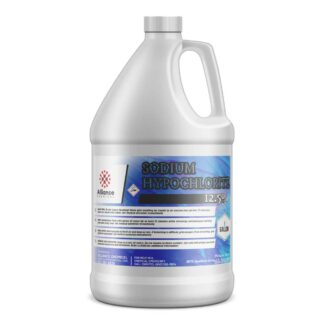 Sodium Hypochlorite 12.5%$22.00 – $2,646.00
Sodium Hypochlorite 12.5%$22.00 – $2,646.00
Frequently Asked Questions About Sodium Hypochlorite 12.5%
Here, we address common queries about Sodium Hypochlorite 12.5%, offering detailed answers to help you understand and use this chemical safely and effectively.
What Surfaces Can I Safely Use Sodium Hypochlorite On?
Sodium Hypochlorite is safe for use on many hard, non-porous surfaces like tiles, glass, and certain plastics and metals. It’s ideal for disinfecting bathrooms, kitchens, and swimming pools. Avoid using it on porous materials like wood and certain metals, as it can cause corrosion or discoloration.
How Should Sodium Hypochlorite Be Diluted for Different Applications?
The dilution ratio depends on the application. For general cleaning, a 1:30 ratio (chemical to water) is typically sufficient. For tougher mold or algae, use a 1:10 ratio. Always dilute Sodium Hypochlorite before use to minimize the risk of damage or irritation.
Can Sodium Hypochlorite Be Mixed With Other Cleaning Agents?
It’s not recommended to mix Sodium Hypochlorite with other cleaning agents, especially ammonia or vinegar, as this can release toxic gases. However, combining it with a small amount of detergent can enhance its cleaning power for certain applications.
What Are the Storage and Shelf Life Guidelines for Sodium Hypochlorite?
Store Sodium Hypochlorite in a cool, dry place away from direct sunlight. Properly stored, it has a shelf life of about 6 months. Once diluted, use the solution within 24 hours for maximum effectiveness.
What Immediate Actions Should Be Taken in Case of Accidental Exposure?
If skin contact occurs, rinse the area with water for 15 minutes. For eye exposure, flush with water for at least 15 minutes and seek medical attention. If inhaled, move to an area with fresh air and seek medical help if breathing difficulties continue.
How Does Sodium Hypochlorite Impact the Environment?
When used responsibly, the environmental impact of Sodium Hypochlorite can be minimal. However, it can harm aquatic life and disrupt ecosystems if large amounts enter waterways. Use it in controlled quantities and avoid disposing of it in storm drains or water sources.
Next: Real-world Case StudiesEnvironmental Considerations of Sodium Hypochlorite 12.5%
Sodium Hypochlorite 12.5% is a potent cleaning agent, but its environmental impact requires careful consideration. This section explores the ecological aspects of using Sodium Hypochlorite and offers guidance for its responsible use.
Impact on Aquatic Life
Sodium Hypochlorite can be harmful to aquatic life if it enters waterways. It can disrupt aquatic ecosystems by harming fish and other wildlife. To minimize risks, avoid using it near ponds, streams, and storm drains. Always follow local guidelines for water protection when using chemicals outdoors.
Biodegradability and Breakdown
When released into the environment, Sodium Hypochlorite breaks down into salt and water, with a minimal long-term impact. However, its immediate effect can be significant, especially in high concentrations. This breakdown process is faster in sunlight and slower in colder temperatures.
Safe Disposal Practices
Never dispose of Sodium Hypochlorite or its solutions in natural water bodies. Instead, dilute it with a large volume of water and dispose of it through the sanitary sewer system, if permissible. Always check local waste disposal regulations before disposing of any chemical solutions.
Reducing Environmental Impact
Use Sodium Hypochlorite responsibly to minimize environmental impact. This includes using the correct dilution ratios, avoiding overuse, and applying it only where necessary. Consider using alternative cleaning agents for less demanding tasks to reduce chemical usage.
Regulations and Compliance
Stay informed about and comply with environmental regulations related to Sodium Hypochlorite. This includes proper labeling, storage, and handling, as well as adhering to any local or national guidelines for chemical use and disposal.
Next: Alternatives and ComparisonsAlternatives and Comparisons to Sodium Hypochlorite 12.5%
Exploring alternatives to Sodium Hypochlorite 12.5% can offer different benefits in terms of safety, environmental impact, and application. Let’s compare Sodium Hypochlorite with other cleaning agents to help you make an informed decision.
Other Chemical Disinfectants
Chemical disinfectants like hydrogen peroxide and quaternary ammonium compounds are often used as alternatives. Hydrogen peroxide is less corrosive and more environmentally friendly but may be less effective against certain types of bacteria and viruses. Quaternary ammonium compounds are effective disinfectants, but they can be more expensive and require longer contact times.
Natural and Eco-friendly Alternatives
Vinegar and baking soda are popular natural alternatives. Vinegar, an acetic acid solution, is good for general cleaning but is less effective as a disinfectant. Baking soda is excellent for scrubbing and deodorizing but lacks strong antimicrobial properties. These options are safer and more eco-friendly but may not always provide the same level of disinfection.
Cost and Accessibility Comparison
Sodium Hypochlorite is generally more cost-effective and widely available compared to specialized disinfectants and natural alternatives. While natural solutions might be more affordable, they may not always be practical for large-scale or heavy-duty applications.
Application-Specific Recommendations
For heavy-duty disinfection, such as in healthcare settings, Sodium Hypochlorite or quaternary ammonium compounds are recommended. For everyday household cleaning, natural alternatives like vinegar and baking soda can be sufficient and safer.
Health and Environmental Impact
When considering health and environmental impact, natural alternatives are generally safer, though they may offer less potent disinfection. Sodium Hypochlorite, while effective, requires careful handling due to its corrosive nature and potential environmental impact if not used responsibly.
Next: Buying GuideBuying Guide for Sodium Hypochlorite 12.5% and 5.25%
When selecting Sodium Hypochlorite, understanding your needs and the product’s specifics is key. This guide will help you navigate the options of Sodium Hypochlorite 12.5% and Sodium Hypochlorite 5.25%, ensuring you make the best choice for your application.
Understanding Concentrations and Grades
Choose the concentration based on the intended use. Sodium Hypochlorite 12.5% is more potent, suitable for heavy-duty disinfection. The 5.25% solution is a milder alternative, better for regular household cleaning. Ensure the product grade matches your application requirements, whether it’s for industrial, household, or pool maintenance.
Selecting Reliable Suppliers
Reliability and product quality are paramount. Alliance Chemical provides high-standard 12.5% and 5.25% Sodium Hypochlorite solutions, adhering to safety and quality standards. Check customer reviews and compliance certificates to ensure supplier credibility.
Price Comparison and Budgeting
Compare prices, but also consider the long-term value. Higher concentrations like 12.5% might offer more uses per volume compared to 5.25%, affecting overall cost-effectiveness. Budget for your specific needs, factoring in both upfront costs and long-term usage.
Packaging and Storage Options
Choose packaging that suits your storage capacity and usage frequency. Alliance Chemical offers robust packaging options for both 12.5% and 5.25% solutions. Proper storage is crucial to maintain efficacy; store in a cool, ventilated area, away from direct sunlight.
Legal and Compliance Considerations
Ensure your use of Sodium Hypochlorite aligns with local regulations and safety guidelines. Familiarize yourself with the necessary legal and environmental compliance, especially for large-scale or industrial applications.
Next: User Reviews and TestimonialsUser Reviews and Testimonials on Sodium Hypochlorite 12.5%
Discover the diverse experiences of individuals and professionals who have used Sodium Hypochlorite 12.5%. Below are testimonials to provide insights into its efficacy and application.
Sarah’s Story: Home Mold Remediation
“After struggling with persistent mold in our bathroom, we tried Sodium Hypochlorite 12.5%. The results were incredible – the mold was completely gone, and the bathroom looked as good as new. It’s been a game-changer for our household cleaning routine.”
Mike’s Industrial Experience
“As a maintenance supervisor for a large facility, we often deal with algae issues in cooling towers. We switched to Sodium Hypochlorite 12.5% last year, and it has drastically improved our cleaning process, saving us time and resources.”
Lisa, Professional Cleaner
“I run a cleaning service and Sodium Hypochlorite 12.5% is my go-to for tough jobs. It’s effective, reliable, and clients are always satisfied with the outcome. Just remember to follow safety guidelines when using it.”
Environmental Concerns: A User’s Perspective
“While I’ve had positive results using Sodium Hypochlorite for patio cleaning, I’m mindful of its environmental impact. I make sure to use it responsibly, following all recommended safety and disposal procedures.”
Conclusion and Final Thoughts on Sodium Hypochlorite 12.5%
As we’ve explored in this comprehensive guide, Sodium Hypochlorite 12.5% stands out as a powerful and versatile agent for tackling mold, algae, and other cleaning challenges.
Key Takeaways
From its chemistry and effective application methods to safety guidelines and environmental considerations, Sodium Hypochlorite offers a reliable solution in various settings. Its efficacy in residential, industrial, and professional contexts has been highlighted through fictional user experiences.
Responsible Use and Best Practices
It’s crucial to emphasize the importance of responsible usage, adhering to safety protocols, and considering the environmental impact when using chemical agents like Sodium Hypochlorite.
Final Recommendations
Whether you’re dealing with stubborn mold, managing industrial cleaning, or seeking an effective disinfectant, Sodium Hypochlorite 12.5% is a worthy option. However, always remember to use it judiciously and in accordance with best practices.
Thank you for joining us on this journey through the world of Sodium Hypochlorite. We hope this guide has been informative and helpful in understanding the various aspects of this powerful cleaning agent.




